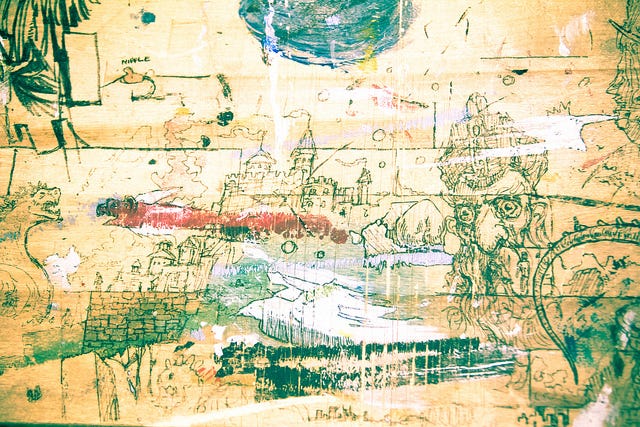Perception, Possession
To have and to hold, cogito ergo sum.
The map is not the territory, as they say. A map (and there are various kinds) is an interpretative layer on top of some underlying substance. It would be hard to handle the world without maps, but they are necessarily reductive. As I wrote in 2016:
[N]o map is a 1:1 representation of reality — that would be a duplicate, or a simulation. Rather, our maps give us heuristics for interpreting the lay of the land, so to speak, and rules for how to react to what we encounter. Maps are produced by fallible humans, so they contain inaccuracies. Often they don’t handle edge cases well (or at all).
Nevertheless, I like mental models [which are one of the types of maps]. They cut through all the epistemological bullshit. Instead of optimizing a mental model to be true, you optimize it to be useful. An effective mental model is one that helps you be, well, more effective.
Although the map is not the territory, and we recognize this, a map can still dictate how the territory is perceived. How it is navigated. Which features of the terrain are considered salient. Maps are powerful and people vie for control of the ones that they consider influential. (Consider the recent kerfuffle over a certain New York newspaper’s op-ed section.)

Of course, you can diverge from a given map, or improve it, or substitute a new one. But even switching between existing maps is difficult and can take time, although in my experience it’s possible to develop multi-map skills.
The LessWrong wiki points out that because the map is not the territory, manipulating the map only affects the map. “If you change what you believe about an object, that is a change in the pattern of neurons in your brain. The real object will not change because of this edit.”
However: “The map is a separate object from the territory and the map exists as an object inside the territory.” For example, your thoughts and ideas about yourself are created within — are even created by! — the entity that they attempt to understand. It gets recursive very quickly.
There is no requirement that you perceive the world as it is. I’d go as far as saying that accurate world-perception is 1) a nightmare to judge one way or the other, since any judgment would be subjective, and 2) not intrinsically noble.
You can post-process your raw intake into whatever form is most useful to you. In fact, your brain already does post-processing automatically, from the sensory level on upward. When its output is particularly debilitating, we turn to medication or suggest cognitive behavioral therapy. Thus the “meme yourself into X” concept.
Seeking and synthesizing meaning from whatever chaotic milieu you occupy is a way to own the world. (I find it immensely satisfying.) There’s a passage from Cormac McCarthy’s masterful Blood Meridian:
Whatever exists, he said. Whatever in creation exists without my knowledge exists without my consent.
He looked about at the dark forest in which they were bivouacked. He nodded toward the specimens he’d collected. These anonymous creatures, he said, may seem little or nothing in the world. Yet the smallest crumb can devour us. Any smallest thing beneath yon rock out of men’s knowing. Only nature can enslave man and only when the existence of each last entity is routed out and made to stand naked before him will he be properly suzerain of the earth.
In the context of Blood Meridian the idea is dark, because that’s the nature of the novel. But in the context of our lives, I think knowledge-based dominion is an empowering concept.
You cannot rule the world. Or even if you can, it won’t stop you from becoming Ozymandias. We all meet his fate, on varying levels of grandeur. But you can bring the world into yourself and command its tulpa to do your bidding.
